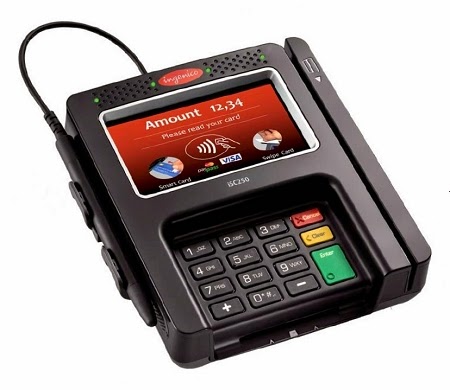As many businesses in today's fast paced environment are learning, accepting credit cards is a must for day to day business. Due to the conveniences that credit cards provide, they have become the most common method of payment. Those businesses which remain cash-only and do not accept credit cards find themselves in a tough spot since consumers are likely to go elsewhere. Increasing sales means accepting plastic!
Merchant Accounts
In order to accept credit cards as a form of payment, you will need a merchant account. Without a merchant account, your
credit card terminal won't do anything other than look good. There are a number of merchant account services available and you should do your research before making your final decision. Don't worry though, we'll give you more information on what to look for when choosing the right merchant services.
What a merchant account does
A merchant account processes a credit card sale in conjunction with your credit card payment terminal. Once your customer's credit card is swiped through the payment terminal, their account is checked and verified for the appropriate funds. If approved, the funds are then transferred to your business account. Essentially, a merchant account is the middle man or bridge transferring money from one account to the other. Of course this is a very basic description of a merchant account and what a merchant account does.
Choosing the right merchant account
When attempting to choose the right merchant account, you should be very clear on what your business' needs are. How many transactions will you have per month? What will the average amount be per transaction? How many locations will you operate from? These questions are very important for the following reasons...
- Transaction rates: percentage of sale + transaction fee
- Monthly fee: flat rate or percentage
- Minimum monthly transactions
Another thing to look for is whether or not you can provide your own credit card payment terminal. Many merchants will charge you a monthly fee for using (renting) their payment terminal, whereas purchasing one for a onetime fee would be much more cost effective. Of course you want to be sure you purchase your payment terminal from a trusted company such as SaleTerminal.com.
Final Note
Accepting credit cards is a must in today's business world. However, planning for and choosing the right merchant account shouldn't be a split second decision. Be sure to learn your business' needs and choose a cost effective plan. If possible, save money by purchasing a credit card payment terminal outright rather than renting one from your merchant services.

